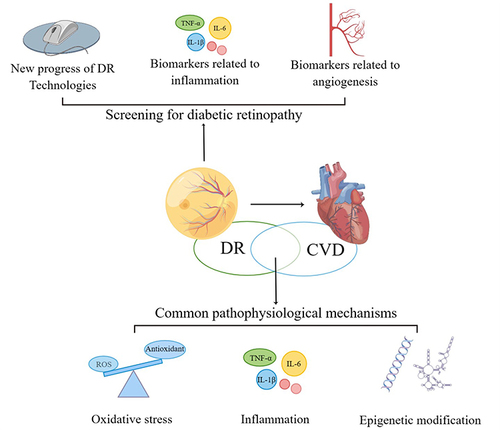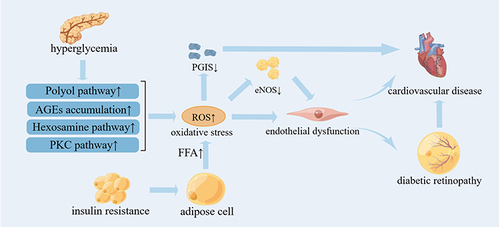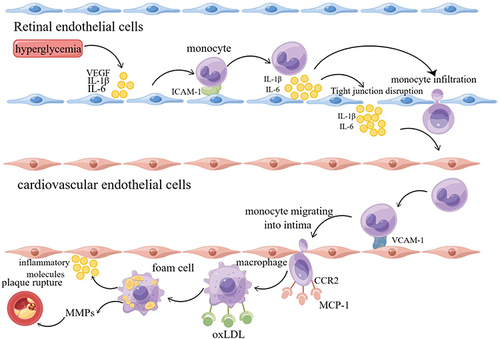Figures & data
Figure 1 The main content of the review (By Figdraw). This review discusses the feasibility of DR in predicting CVD from the common risk factors and pathophysiological mechanisms of DR and CVD, the new progress of diagnostic techniques for DR, and the biomarkers for early screening of DR.

Figure 2 The role of oxidative stress on DR And CVD (By Figdraw). Hyperglycemia induces the activation of PKC pathway, the increase of polyol pathway flux, the activation of hexosamine pathway and the accumulation of AGEs, which promote oxidative stress. In addition, insulin resistance increases the flux and oxidation of FFA from adipocytes into arterial endothelial cells, which leads to excessive ROS production in mitochondria. Excessive ROS production directly leads to endothelial dysfunction or indirectly leads to endothelial dysfunction by uncoupling eNOS, and further induces DR and CVD.

Figure 3 Hypothesis of inflammation as a key factor in the development of atherosclerotic cardiovascular disease induced by diabetic retinopathy (By Figdraw). Hyperglycemia causes retinal endothelial cell dysfunction and produces inflammatory factors such as VEGF and IL-6. Inflammatory factors destroy the tight junction between endothelial cells, destroy BRB, promote the extravasation of inflammatory cells such as monocytes, and further aggravate the inflammatory state of tissues. Driven by inflammation, endothelial cells synthesize uncontrolled inflammatory mediators, resulting in a surge of inflammatory mediators entering the systemic circulation. When vascular endothelial cells are activated by inflammation, it leads to the development of atherosclerosis and eventually leads to the occurrence of CVD.


